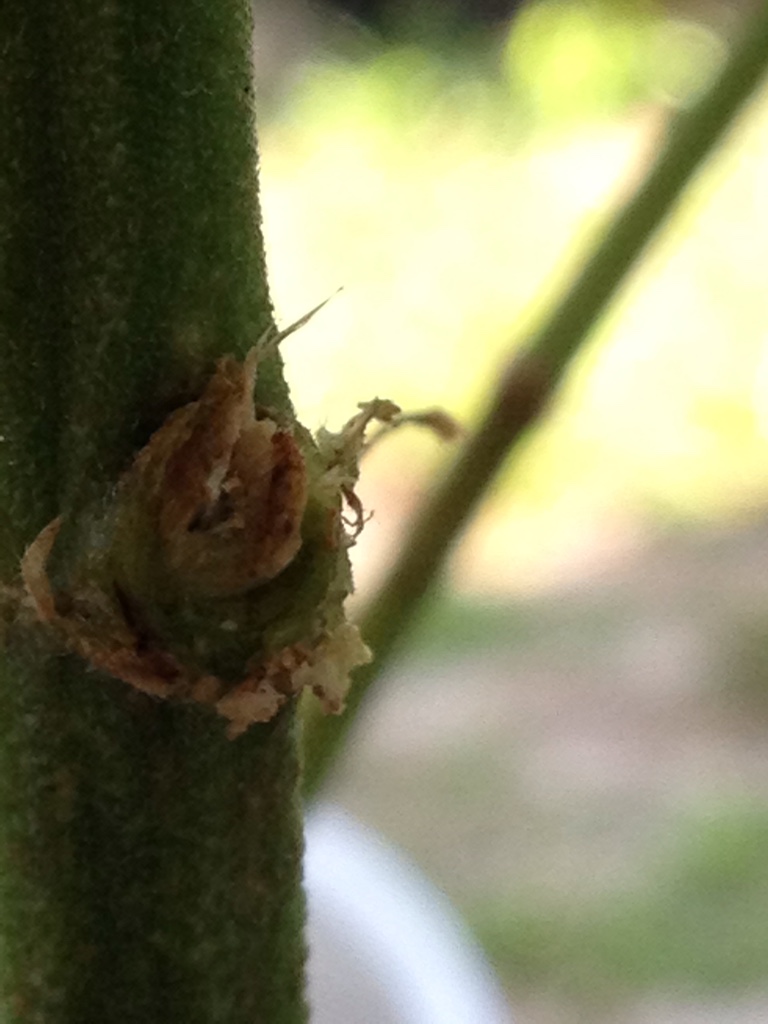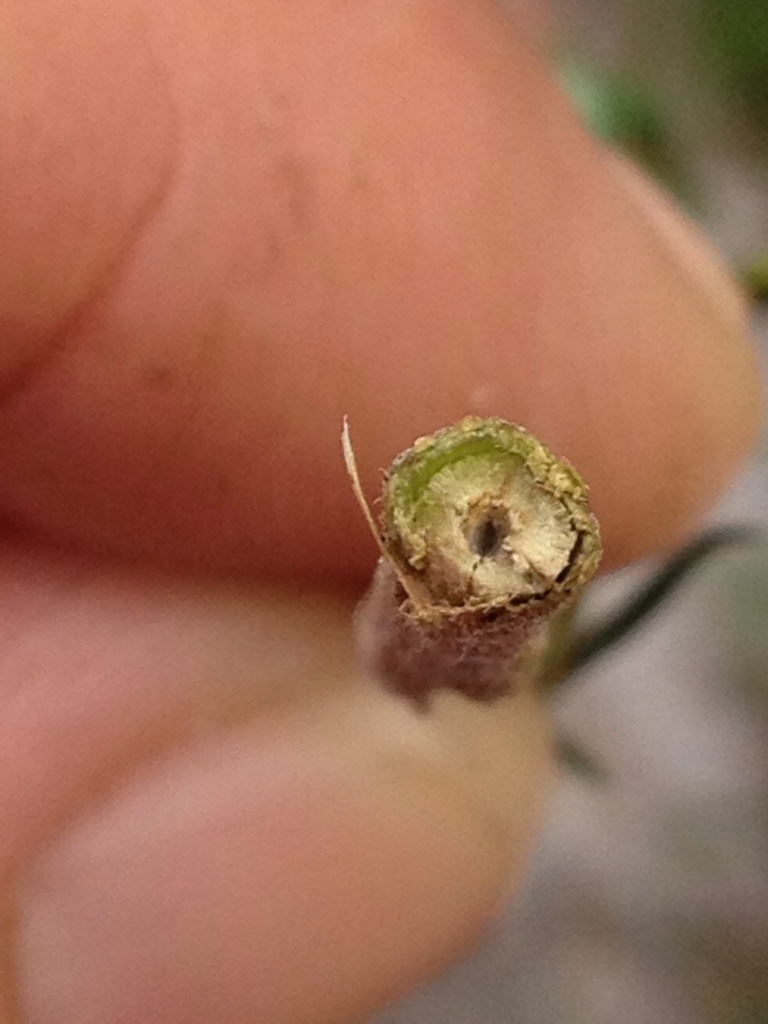Hello ohioboy,
Here are my thoughts, what you have depicted looks like a scale insect, but I'm not sure if this is the culprit for killing your branch. Scale insects clamp onto the stems, sucking the vascular juices from the plant, I would think you would need several attached scale insects to take that branch down.
When you're growing outside, you deal with a plethora of insect problems so you have to stay fairly vigilant throughout to ensure your medicine comes out clean.
Keep in mind that cannabis stems and trunks will indeed hollow out naturally as they get older and older (this is one sign that the plant is mature), so just because it's hollow does not necessarily mean that it's been chewed out from the inside. However, with these worms, it can be very difficult to find them since they are mobile. One tell-tale sign would be an "entry-pore" that you can see in one of my pictures.
Anyway, considering it may not be borers, your branch appeared to have some kind of fungus/rot growing either on it, or inside it at one time. Recently I had to cut off a top cola off my plant not because mold was growing ON the stem, but the fungus pathogen had found its way INSIDE the stem, and so a simple alcohol swab wouldn't work, the entire branch must have been cut off to save the rest.
You must consider the temperature and humidity and whether this could have promoted fungus.
Another tell-tale sign that worms are about, are the fecal matter droppings, if you see them - then it becomes obvious what you are dealing with. It appears your plant have gone through some revegeation, which makes it a bit vulnerable to pests because of all of the foliage they can hide under and escape unnoticed. Make sure to do daily inspects and remove ALL dead material because this attracts fungus and pests.
Revegetation is a stressful thing for these plants, and may cause hindrances in resistance genes which keep the plant healthy. People forget that these are organisms that are alive, they are prone to sickness/disease just as we are, and not all specimens are perfect in nature, but we do the best we can.
What I would recommend is to inspect the plant for problems as much as possible, cut and remove dead material as you find it. You may also consider trimming a good portion of the lowest canopy of the plant, as this won't produce great flowers and is more of a nesting zone for creatures looking for food or to stay cozy at night.
SNS, as Cannafan pointed out, have some great preventative products that you should check out. However you will want to pick up a bottle of "Azamax" (google it) as this is IMO the superior broad-spectrum insecticide (which is safe to use of course), BT also does work well, but I do not like the smell of it on my plants and I've had better luck with Azamax.
1) Maintain daily inspections looking for pests (look under the stems, everywhere, look for the scale insects that may be attached)
2) Trim clustered areas, remove dead material
3) Spray BT or azamax once a week, emphasizing the undersides of the leaves
Also note that even a single old calyx on a stem may be a fungal initiation site, which can cause internal stem rot - this is very hard to deal with so you just have to look for possible mold spots when you inspect. Also consider the humidity when you are watering, make sure not to overwater.
Just stay positive and take it as a learning experience about what you might encounter while growing, and know that it could be worse.
Hope this helps!








 ....
....



 I fully expect them here, I planted sweet corn this year. LOL
I fully expect them here, I planted sweet corn this year. LOL

